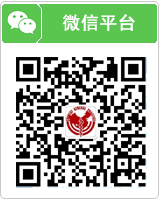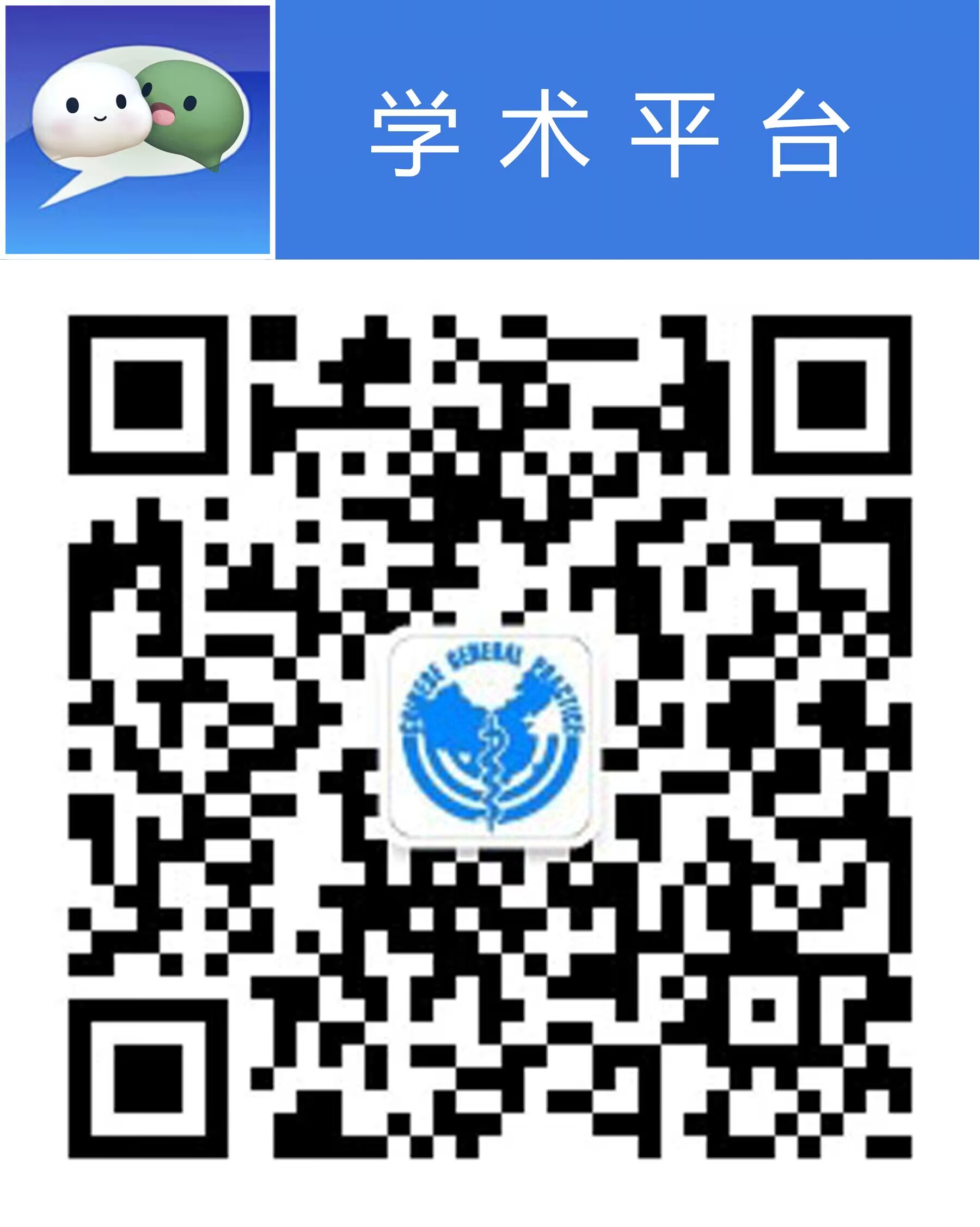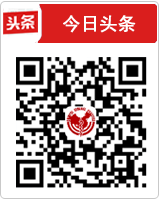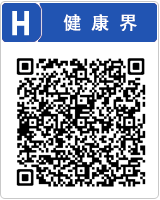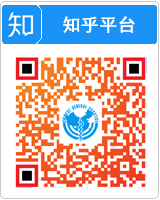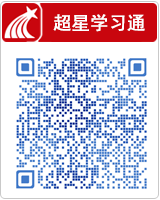中国全科医学 ›› 2024, Vol. 27 ›› Issue (21): 2630-2638.DOI: 10.12114/j.issn.1007-9572.2023.0599
葛亚雪1,2, 丁治国2,*( ), 陈晓珩1, 李会龙1, 祁烁2, 户蕊2,*(
), 陈晓珩1, 李会龙1, 祁烁2, 户蕊2,*( )
)
收稿日期:2023-10-25
修回日期:2024-03-05
出版日期:2024-07-20
发布日期:2024-04-18
通讯作者:
丁治国, 户蕊
作者贡献:
葛亚雪负责研究的构思与设计,结果的分析与解释,统计学处理及论文撰写;陈晓珩进行研究的实施与可行性分析;李会龙、祁烁进行论文的修订;丁治国、户蕊负责文章的质量控制与审查,对文章整体负责,监督管理。
基金资助:
GE Yaxue1,2, DING Zhiguo2,*( ), CHEN Xiaoheng1, LI Huilong1, QI Shuo2, HU Rui2,*(
), CHEN Xiaoheng1, LI Huilong1, QI Shuo2, HU Rui2,*( )
)
Received:2023-10-25
Revised:2024-03-05
Published:2024-07-20
Online:2024-04-18
Contact:
DING Zhiguo, HU Rui
摘要: 背景 中国传统医学对桥本甲状腺炎并发甲状腺毒症的发生、发展和诊疗已经有了系统的认识,但是目前关于本病人群中医临床症状和证型分布情况研究甚少,国家行业标准中亦缺乏关于本病的证型分布及证候诊断标准的描述。 目的 运用因子分析联合聚类分析探讨桥本甲状腺炎并发甲状腺毒症人群临床症状及证型分布规律,为临床辨证提供依据,促进桥本甲状腺炎并发甲状腺毒症证候标准化研究。 方法 收集2020年12月—2021年12月就诊于北京中医药大学东直门医院东城院区、通州院区、北京中医药大学孙思邈医院甲状腺病科门诊符合诊断标准的171例桥本甲状腺炎并发甲状腺毒症患者,使用《桥本甲状腺炎并发甲状腺毒症中医四诊信息采集表》对症状/体征、舌、脉等四诊信息进行采集,基于因子分析和聚类分析研究桥本甲状腺炎并发甲状腺毒症的症状及证型分布规律。 结果 171例桥本甲状腺炎并发甲状腺毒症患者中男17例、女154例,平均年龄(39.98±13.30)岁,其中20~60岁患者占87.72%。症状分布方面出现频率较高的症状有神疲乏力、心慌心悸、烦躁或急躁易怒,体征有颈前肿大、手指震颤,频率较高的舌象有舌红、舌瘦薄和舌有齿痕,苔质为苔白和苔薄,脉象是脉弦、脉数。收集调查表的82个四诊条目因子分析,提取出25个公因子,累计方差贡献率为70.562%,筛选出具有意义的症状62项。利用因子分析得到的25个公因子结果作为变量对其进行R型系统聚类分析,共得到5类证候分型,分别是:肝郁痰凝证、阴虚火旺证、脾肾阳虚证、肝郁气滞证、气阴两虚证。 结论 桥本甲状腺炎并发甲状腺毒症的基本中医证候可分为肝郁痰凝证、阴虚火旺证、脾肾阳虚证、肝郁气滞证、气阴两虚证。
中图分类号:
| 症状/体征 | 频数 | 频率(%) | 症状/体征 | 频数 | 频率(%) |
|---|---|---|---|---|---|
| 神疲乏力 | 134 | 78.36 | 女子月经色暗 | 63 | 36.84 |
| 颈前肿大 | 132 | 77.19 | 大便频多 | 62 | 36.26 |
| 心慌心悸 | 132 | 77.19 | 下肢浮肿 | 61 | 35.67 |
| 烦躁或急躁易怒 | 131 | 76.61 | 多汗 | 60 | 35.09 |
| 紧张或焦虑 | 110 | 64.33 | 口苦 | 59 | 34.50 |
| 气短 | 98 | 57.31 | 眼睑浮肿 | 58 | 33.92 |
| 潮热 | 98 | 57.31 | 颈部觉胀 | 57 | 33.33 |
| 手指震颤 | 94 | 54.97 | 自汗 | 53 | 30.99 |
| 眠浅易醒 | 92 | 53.80 | 颈部压迫感 | 52 | 30.41 |
| 胸闷 | 91 | 53.22 | 少寐 | 42 | 24.56 |
| 口咽干燥 | 91 | 53.22 | 目胀 | 41 | 23.98 |
| 心烦 | 90 | 52.63 | 手足心热 | 41 | 23.98 |
| 下肢沉重 | 90 | 52.63 | 脘腹胀满 | 40 | 23.39 |
| 入睡困难 | 90 | 52.63 | 怕冷 | 37 | 21.64 |
| 多梦 | 89 | 52.05 | 面色红赤 | 36 | 21.05 |
| 情志抑郁 | 88 | 51.46 | 胁肋胀痛 | 34 | 19.88 |
| 咽部异物感 | 87 | 50.88 | 大便黏滞不爽 | 34 | 19.88 |
| 善太息 | 87 | 50.88 | 月经不调 | 32 | 18.71 |
| 怕热 | 86 | 50.29 | 大便稀溏 | 31 | 18.13 |
| 脱发 | 80 | 46.78 | 大便秘结 | 29 | 16.96 |
| 月经量少或闭经 | 77 | 45.03 | 盗汗 | 28 | 16.37 |
| 形体消瘦 | 76 | 44.44 | 腰膝酸软 | 26 | 15.20 |
| 多食易饥 | 73 | 42.69 | 胸胁胀满 | 23 | 13.45 |
| 体重减轻 | 73 | 42.69 | 眼球突出 | 22 | 12.87 |
| 双目干涩 | 68 | 39.77 | 视物昏蒙 | 22 | 12.87 |
| 失眠 | 68 | 39.77 | 皮肤瘙痒 | 21 | 12.28 |
| 头晕目眩 | 63 | 36.84 | 腰膝怕冷 | 20 | 11.70 |
| 口渴喜冷饮 | 63 | 36.84 | 大便先干后稀 | 19 | 11.11 |
表1 桥本甲状腺炎并发甲状腺毒症症状、体征分布(N=171,频率≥10%)
Table 1 Distribution of symptoms and signs of Hashimoto's thyroiditis complicated with thyrotoxicosis
| 症状/体征 | 频数 | 频率(%) | 症状/体征 | 频数 | 频率(%) |
|---|---|---|---|---|---|
| 神疲乏力 | 134 | 78.36 | 女子月经色暗 | 63 | 36.84 |
| 颈前肿大 | 132 | 77.19 | 大便频多 | 62 | 36.26 |
| 心慌心悸 | 132 | 77.19 | 下肢浮肿 | 61 | 35.67 |
| 烦躁或急躁易怒 | 131 | 76.61 | 多汗 | 60 | 35.09 |
| 紧张或焦虑 | 110 | 64.33 | 口苦 | 59 | 34.50 |
| 气短 | 98 | 57.31 | 眼睑浮肿 | 58 | 33.92 |
| 潮热 | 98 | 57.31 | 颈部觉胀 | 57 | 33.33 |
| 手指震颤 | 94 | 54.97 | 自汗 | 53 | 30.99 |
| 眠浅易醒 | 92 | 53.80 | 颈部压迫感 | 52 | 30.41 |
| 胸闷 | 91 | 53.22 | 少寐 | 42 | 24.56 |
| 口咽干燥 | 91 | 53.22 | 目胀 | 41 | 23.98 |
| 心烦 | 90 | 52.63 | 手足心热 | 41 | 23.98 |
| 下肢沉重 | 90 | 52.63 | 脘腹胀满 | 40 | 23.39 |
| 入睡困难 | 90 | 52.63 | 怕冷 | 37 | 21.64 |
| 多梦 | 89 | 52.05 | 面色红赤 | 36 | 21.05 |
| 情志抑郁 | 88 | 51.46 | 胁肋胀痛 | 34 | 19.88 |
| 咽部异物感 | 87 | 50.88 | 大便黏滞不爽 | 34 | 19.88 |
| 善太息 | 87 | 50.88 | 月经不调 | 32 | 18.71 |
| 怕热 | 86 | 50.29 | 大便稀溏 | 31 | 18.13 |
| 脱发 | 80 | 46.78 | 大便秘结 | 29 | 16.96 |
| 月经量少或闭经 | 77 | 45.03 | 盗汗 | 28 | 16.37 |
| 形体消瘦 | 76 | 44.44 | 腰膝酸软 | 26 | 15.20 |
| 多食易饥 | 73 | 42.69 | 胸胁胀满 | 23 | 13.45 |
| 体重减轻 | 73 | 42.69 | 眼球突出 | 22 | 12.87 |
| 双目干涩 | 68 | 39.77 | 视物昏蒙 | 22 | 12.87 |
| 失眠 | 68 | 39.77 | 皮肤瘙痒 | 21 | 12.28 |
| 头晕目眩 | 63 | 36.84 | 腰膝怕冷 | 20 | 11.70 |
| 口渴喜冷饮 | 63 | 36.84 | 大便先干后稀 | 19 | 11.11 |
| 舌色 | 频数 | 频率(%) | 舌形 | 频数 | 频率(%) |
|---|---|---|---|---|---|
| 舌红 | 78 | 45.61 | 舌瘦薄 | 39 | 22.81 |
| 舌淡白 | 37 | 21.64 | 舌有齿痕 | 39 | 22.81 |
| 舌淡红 | 31 | 18.13 | 舌胖大 | 24 | 14.04 |
| 舌紫暗 | 22 | 12.87 | 舌点刺 | 15 | 8.77 |
| 舌有瘀斑 | 15 | 8.77 | |||
| 舌点刺 | 15 | 8.77 |
表2 桥本甲状腺炎并发甲状腺毒症舌色、舌形分布(N=171)
Table 2 Hashimoto's thyroiditis complicated with thyrotoxicosis tongue color,tongue shape distribution
| 舌色 | 频数 | 频率(%) | 舌形 | 频数 | 频率(%) |
|---|---|---|---|---|---|
| 舌红 | 78 | 45.61 | 舌瘦薄 | 39 | 22.81 |
| 舌淡白 | 37 | 21.64 | 舌有齿痕 | 39 | 22.81 |
| 舌淡红 | 31 | 18.13 | 舌胖大 | 24 | 14.04 |
| 舌紫暗 | 22 | 12.87 | 舌点刺 | 15 | 8.77 |
| 舌有瘀斑 | 15 | 8.77 | |||
| 舌点刺 | 15 | 8.77 |
| 苔色 | 频数 | 频率(%) | 苔形 | 频数 | 频率(%) |
|---|---|---|---|---|---|
| 苔白 | 78 | 45.61 | 苔薄 | 93 | 54.39 |
| 苔黄 | 72 | 42.11 | 苔厚 | 33 | 19.30 |
| 苔少 | 32 | 18.71 | |||
| 苔腻 | 15 | 8.77 | |||
| 苔滑 | 7 | 4.09 |
表3 桥本甲状腺炎并发甲状腺毒症苔色、苔形分布(N=171)
Table 3 Hashimoto's thyroiditis complicated with thyrotoxicosis moss color,moss shape distribution
| 苔色 | 频数 | 频率(%) | 苔形 | 频数 | 频率(%) |
|---|---|---|---|---|---|
| 苔白 | 78 | 45.61 | 苔薄 | 93 | 54.39 |
| 苔黄 | 72 | 42.11 | 苔厚 | 33 | 19.30 |
| 苔少 | 32 | 18.71 | |||
| 苔腻 | 15 | 8.77 | |||
| 苔滑 | 7 | 4.09 |
| 脉象 | 频数 | 频率(%) |
|---|---|---|
| 脉弦 | 97 | 56.73 |
| 脉数 | 88 | 51.46 |
| 脉细 | 45 | 26.32 |
| 脉滑 | 41 | 23.98 |
| 舌下脉络青紫等 | 38 | 22.22 |
| 脉洪 | 2 | 1.17 |
表4 桥本甲状腺炎并发甲状腺毒症脉象分布(N=171)
Table 4 Pulse string distribution of Hashimoto's thyroiditis complicated with thyrotoxicosis
| 脉象 | 频数 | 频率(%) |
|---|---|---|
| 脉弦 | 97 | 56.73 |
| 脉数 | 88 | 51.46 |
| 脉细 | 45 | 26.32 |
| 脉滑 | 41 | 23.98 |
| 舌下脉络青紫等 | 38 | 22.22 |
| 脉洪 | 2 | 1.17 |
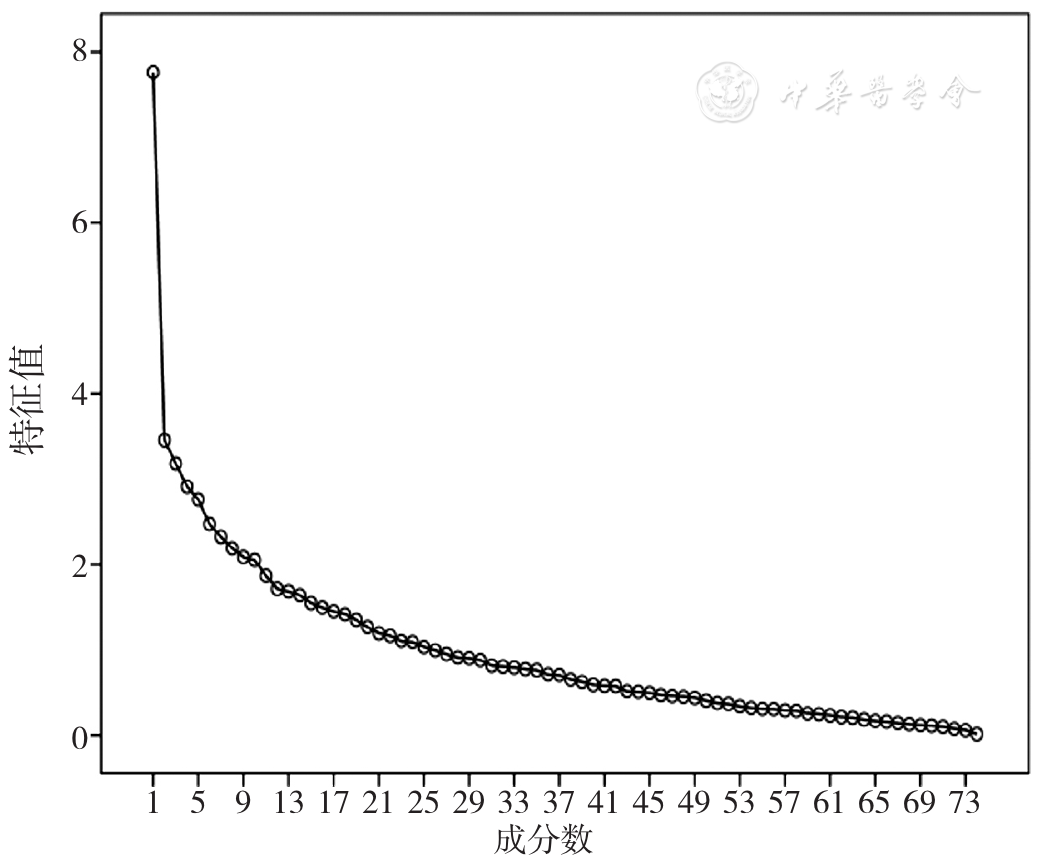
图1 171例桥本甲状腺炎并发甲状腺毒症四诊信息因子分析碎石图
Figure 1 171 cases of Hashimoto's thyroiditis complicated with thyrotoxicosis four diagnostic information factor analysis of gravel map
| 公因子 | 初始特征值 | 提取平方和载入 | 旋转平方和载入 | ||||||
|---|---|---|---|---|---|---|---|---|---|
| 合计 | 方差(%) | 累积(%) | 合计 | 方差(%) | 累积(%) | 合计 | 方差(%) | 累积(%) | |
| F1 | 7.761 | 10.488 | 10.488 | 7.761 | 10.488 | 10.488 | 3.515 | 4.750 | 4.750 |
| F2 | 3.456 | 4.671 | 15.159 | 3.456 | 4.671 | 15.159 | 3.352 | 4.530 | 9.279 |
| F3 | 3.180 | 4.297 | 19.456 | 3.180 | 4.297 | 19.456 | 2.857 | 3.861 | 13.141 |
| F4 | 2.912 | 3.935 | 23.391 | 2.912 | 3.935 | 23.391 | 2.581 | 3.488 | 16.629 |
| F5 | 2.761 | 3.731 | 27.122 | 2.761 | 3.731 | 27.122 | 2.296 | 3.103 | 19.732 |
| F6 | 2.473 | 3.342 | 30.464 | 2.473 | 3.342 | 30.464 | 2.289 | 3.094 | 22.826 |
| F7 | 2.323 | 3.139 | 33.603 | 2.323 | 3.139 | 33.603 | 2.262 | 3.056 | 25.882 |
| F8 | 2.190 | 2.959 | 36.562 | 2.190 | 2.959 | 36.562 | 2.212 | 2.989 | 28.871 |
| F9 | 2.086 | 2.819 | 39.381 | 2.086 | 2.819 | 39.381 | 2.184 | 2.952 | 31.823 |
| F10 | 2.052 | 2.773 | 42.155 | 2.052 | 2.773 | 42.155 | 2.147 | 2.902 | 34.725 |
| F11 | 1.868 | 2.524 | 44.678 | 1.868 | 2.524 | 44.678 | 2.010 | 2.717 | 37.441 |
| F12 | 1.713 | 2.315 | 46.994 | 1.713 | 2.315 | 46.994 | 1.980 | 2.676 | 40.118 |
| F13 | 1.683 | 2.275 | 49.268 | 1.683 | 2.275 | 49.268 | 1.965 | 2.656 | 42.773 |
| F14 | 1.641 | 2.217 | 51.485 | 1.641 | 2.217 | 51.485 | 1.946 | 2.629 | 45.402 |
| F15 | 1.548 | 2.091 | 53.577 | 1.548 | 2.091 | 53.577 | 1.924 | 2.601 | 48.003 |
| F16 | 1.495 | 2.020 | 55.596 | 1.495 | 2.020 | 55.596 | 1.923 | 2.599 | 50.602 |
| F17 | 1.450 | 1.96 | 57.556 | 1.450 | 1.960 | 57.556 | 1.905 | 2.574 | 53.176 |
| F18 | 1.417 | 1.915 | 59.471 | 1.417 | 1.915 | 59.471 | 1.753 | 2.369 | 55.544 |
| F19 | 1.350 | 1.825 | 61.295 | 1.35 | 1.825 | 61.295 | 1.699 | 2.296 | 57.841 |
| F20 | 1.268 | 1.714 | 63.009 | 1.268 | 1.714 | 63.009 | 1.661 | 2.245 | 60.085 |
| F21 | 1.195 | 1.615 | 64.624 | 1.195 | 1.615 | 64.624 | 1.627 | 2.199 | 62.284 |
| F22 | 1.166 | 1.576 | 66.199 | 1.166 | 1.576 | 66.199 | 1.607 | 2.172 | 64.456 |
| F23 | 1.103 | 1.491 | 67.690 | 1.103 | 1.491 | 67.69 | 1.576 | 2.130 | 66.586 |
| F24 | 1.092 | 1.475 | 69.166 | 1.092 | 1.475 | 69.166 | 1.476 | 1.994 | 68.580 |
| F25 | 1.033 | 1.396 | 70.562 | 1.033 | 1.396 | 70.562 | 1.466 | 1.982 | 70.562 |
表5 171例桥本甲状腺炎并发甲状腺毒症四诊信息总方差解释表
Table 5 171 cases of Hashimoto's thyroiditis complicated with thyrotoxicosis four diagnostic information total variance interpretation table
| 公因子 | 初始特征值 | 提取平方和载入 | 旋转平方和载入 | ||||||
|---|---|---|---|---|---|---|---|---|---|
| 合计 | 方差(%) | 累积(%) | 合计 | 方差(%) | 累积(%) | 合计 | 方差(%) | 累积(%) | |
| F1 | 7.761 | 10.488 | 10.488 | 7.761 | 10.488 | 10.488 | 3.515 | 4.750 | 4.750 |
| F2 | 3.456 | 4.671 | 15.159 | 3.456 | 4.671 | 15.159 | 3.352 | 4.530 | 9.279 |
| F3 | 3.180 | 4.297 | 19.456 | 3.180 | 4.297 | 19.456 | 2.857 | 3.861 | 13.141 |
| F4 | 2.912 | 3.935 | 23.391 | 2.912 | 3.935 | 23.391 | 2.581 | 3.488 | 16.629 |
| F5 | 2.761 | 3.731 | 27.122 | 2.761 | 3.731 | 27.122 | 2.296 | 3.103 | 19.732 |
| F6 | 2.473 | 3.342 | 30.464 | 2.473 | 3.342 | 30.464 | 2.289 | 3.094 | 22.826 |
| F7 | 2.323 | 3.139 | 33.603 | 2.323 | 3.139 | 33.603 | 2.262 | 3.056 | 25.882 |
| F8 | 2.190 | 2.959 | 36.562 | 2.190 | 2.959 | 36.562 | 2.212 | 2.989 | 28.871 |
| F9 | 2.086 | 2.819 | 39.381 | 2.086 | 2.819 | 39.381 | 2.184 | 2.952 | 31.823 |
| F10 | 2.052 | 2.773 | 42.155 | 2.052 | 2.773 | 42.155 | 2.147 | 2.902 | 34.725 |
| F11 | 1.868 | 2.524 | 44.678 | 1.868 | 2.524 | 44.678 | 2.010 | 2.717 | 37.441 |
| F12 | 1.713 | 2.315 | 46.994 | 1.713 | 2.315 | 46.994 | 1.980 | 2.676 | 40.118 |
| F13 | 1.683 | 2.275 | 49.268 | 1.683 | 2.275 | 49.268 | 1.965 | 2.656 | 42.773 |
| F14 | 1.641 | 2.217 | 51.485 | 1.641 | 2.217 | 51.485 | 1.946 | 2.629 | 45.402 |
| F15 | 1.548 | 2.091 | 53.577 | 1.548 | 2.091 | 53.577 | 1.924 | 2.601 | 48.003 |
| F16 | 1.495 | 2.020 | 55.596 | 1.495 | 2.020 | 55.596 | 1.923 | 2.599 | 50.602 |
| F17 | 1.450 | 1.96 | 57.556 | 1.450 | 1.960 | 57.556 | 1.905 | 2.574 | 53.176 |
| F18 | 1.417 | 1.915 | 59.471 | 1.417 | 1.915 | 59.471 | 1.753 | 2.369 | 55.544 |
| F19 | 1.350 | 1.825 | 61.295 | 1.35 | 1.825 | 61.295 | 1.699 | 2.296 | 57.841 |
| F20 | 1.268 | 1.714 | 63.009 | 1.268 | 1.714 | 63.009 | 1.661 | 2.245 | 60.085 |
| F21 | 1.195 | 1.615 | 64.624 | 1.195 | 1.615 | 64.624 | 1.627 | 2.199 | 62.284 |
| F22 | 1.166 | 1.576 | 66.199 | 1.166 | 1.576 | 66.199 | 1.607 | 2.172 | 64.456 |
| F23 | 1.103 | 1.491 | 67.690 | 1.103 | 1.491 | 67.69 | 1.576 | 2.130 | 66.586 |
| F24 | 1.092 | 1.475 | 69.166 | 1.092 | 1.475 | 69.166 | 1.476 | 1.994 | 68.580 |
| F25 | 1.033 | 1.396 | 70.562 | 1.033 | 1.396 | 70.562 | 1.466 | 1.982 | 70.562 |
| 公因子 | 症状变量及因子载荷(旋转) |
|---|---|
| F1 | 失眠(0.810),少寐(0.771),入睡困难(0.771),眠浅易醒(0.744),多梦(0.602) |
| F2 | 胸闷(0.735),气短(0.718),心烦(0.652),心慌心悸(0.632),下肢沉重(0.495) |
| F3 | 手足心热(0.796),怕热(0.691),潮热(0.637),多汗(0.608),自汗(0.485) |
| F4 | 体重减轻(0.826),多食易饥(0.779),形体消瘦(0.649) |
| F5 | 口渴喜冷饮(0.860),口咽干燥(0.850) |
| F6 | 下肢浮肿(0.849),眼睑浮肿(0.832),怕冷(-0.443) |
| F7 | 苔黄(0.858),苔白(-0.846) |
| F8 | 颈部觉胀(0.793),颈部压迫感(0.752),咽部异物感(0.476) |
| F9 | 舌淡白(0.816),舌齿痕(0.734) |
| F10 | 苔少(0.737),苔薄(-0.695),面色红赤(0.402) |
| F11 | 大便频多(0.646),大便稀溏(0.643),大便秘结(-0.608) |
| F12 | 紧张或焦虑(0.683),情志抑郁(0.681) |
| F13 | 女子月经色暗(0.682),苔厚(-0.51),盗汗(-0.418) |
| F14 | 脉数(0.679),手指震颤(0.531),舌红(0.499),舌紫暗(-0.416) |
| F15 | 目胀(0.699),善太息(0.503),眼球突出(0.462) |
| F16 | 胸胁胀满(0.699),胁肋胀痛(0.509) |
| F17 | 大便先干后稀(0.673),脘腹胀满(0.559) |
| F18 | 皮肤瘙痒(0.777),腰膝怕冷(0.554) |
| F19 | 月经量少或闭经(0.746) |
| F20 | 脉滑(0.684),舌紫暗(0.518) |
| F21 | 舌下脉络青紫等(-0.787) |
| F22 | 神疲乏力(0.790) |
| F23 | 大便黏滞不爽(0.759) |
| F24 | 脉弦(0.769) |
| F25 | 舌胖大(0.803) |
表6 25个公因子所包含的62个症状变量及因子载荷
Table 6 A total of 62 symptom variables and factor loadings were included in 25 common factors.
| 公因子 | 症状变量及因子载荷(旋转) |
|---|---|
| F1 | 失眠(0.810),少寐(0.771),入睡困难(0.771),眠浅易醒(0.744),多梦(0.602) |
| F2 | 胸闷(0.735),气短(0.718),心烦(0.652),心慌心悸(0.632),下肢沉重(0.495) |
| F3 | 手足心热(0.796),怕热(0.691),潮热(0.637),多汗(0.608),自汗(0.485) |
| F4 | 体重减轻(0.826),多食易饥(0.779),形体消瘦(0.649) |
| F5 | 口渴喜冷饮(0.860),口咽干燥(0.850) |
| F6 | 下肢浮肿(0.849),眼睑浮肿(0.832),怕冷(-0.443) |
| F7 | 苔黄(0.858),苔白(-0.846) |
| F8 | 颈部觉胀(0.793),颈部压迫感(0.752),咽部异物感(0.476) |
| F9 | 舌淡白(0.816),舌齿痕(0.734) |
| F10 | 苔少(0.737),苔薄(-0.695),面色红赤(0.402) |
| F11 | 大便频多(0.646),大便稀溏(0.643),大便秘结(-0.608) |
| F12 | 紧张或焦虑(0.683),情志抑郁(0.681) |
| F13 | 女子月经色暗(0.682),苔厚(-0.51),盗汗(-0.418) |
| F14 | 脉数(0.679),手指震颤(0.531),舌红(0.499),舌紫暗(-0.416) |
| F15 | 目胀(0.699),善太息(0.503),眼球突出(0.462) |
| F16 | 胸胁胀满(0.699),胁肋胀痛(0.509) |
| F17 | 大便先干后稀(0.673),脘腹胀满(0.559) |
| F18 | 皮肤瘙痒(0.777),腰膝怕冷(0.554) |
| F19 | 月经量少或闭经(0.746) |
| F20 | 脉滑(0.684),舌紫暗(0.518) |
| F21 | 舌下脉络青紫等(-0.787) |
| F22 | 神疲乏力(0.790) |
| F23 | 大便黏滞不爽(0.759) |
| F24 | 脉弦(0.769) |
| F25 | 舌胖大(0.803) |
| 归类 | 公因子 | 四诊信息 | 证候 |
|---|---|---|---|
| 第一类 | F1、F8、F23、F21、F12 | 失眠(0.810),少寐(0.771),入睡困难(0.771),眠浅易醒(0.744),多梦(0.602),颈部觉胀(0.793),颈部压迫感(0.752),咽部异物感(0.476),大便黏滞不爽(0.759),舌下脉络青紫等(-0.787),紧张或焦虑(0.683),情志抑郁(0.681) | 肝郁痰凝证 |
| 第二类 | F5、F17、F4、F10、F22 | 口渴喜冷饮(0.86),口咽干燥(0.85),大便先干后稀(0.673),脘腹胀满(0.559),体重减轻(0.826),多食易饥(0.779),形体消瘦(0.649),苔少(0.737),苔薄(-0.695),面色红赤(0.402),神疲乏力(0.790) | 阴虚火旺证 |
| 第三类 | F11、F18、F6 | 大便频多(0.646)、大便稀溏(0.643),皮肤瘙痒(0.777)、腰膝怕冷(0.554),下肢浮肿(0.849),眼睑浮肿(0.832),怕冷(-0.443) | 脾肾阳虚证 |
| 第四类 | F15、F20、F16 | 目胀(0.699)、善太息(0.503)、眼球突出(0.462),脉滑(0.684)、舌紫暗(0.518),胸胁胀满(0.699)、胁肋胀痛(0.509) | 肝郁气滞证 |
| 第五类 | F7、F9、F2、F24、F25、F3、F13、F19、F14 | 苔黄(0.858),舌淡白(0.816),舌齿痕(0.734),胸闷(0.735),气短(0.718),心烦(0.652),心慌心悸(0.632),下肢沉重(0.495),脉弦(0.769),舌胖大(0.803),手足心热(0.796),怕热(0.691),潮热(0.637),多汗(0.608),自汗(0.485),女子月经色暗(0.682),月经量少或闭经(0.746),脉数(0.679),手指震颤(0.531),舌红(0.499),舌紫暗(-0.416) | 气阴两虚证 |
表7 聚类公因子所含四诊信息表(欧式距离=15)
Table 7 The four diagnostic information table contained in the clustering common factor
| 归类 | 公因子 | 四诊信息 | 证候 |
|---|---|---|---|
| 第一类 | F1、F8、F23、F21、F12 | 失眠(0.810),少寐(0.771),入睡困难(0.771),眠浅易醒(0.744),多梦(0.602),颈部觉胀(0.793),颈部压迫感(0.752),咽部异物感(0.476),大便黏滞不爽(0.759),舌下脉络青紫等(-0.787),紧张或焦虑(0.683),情志抑郁(0.681) | 肝郁痰凝证 |
| 第二类 | F5、F17、F4、F10、F22 | 口渴喜冷饮(0.86),口咽干燥(0.85),大便先干后稀(0.673),脘腹胀满(0.559),体重减轻(0.826),多食易饥(0.779),形体消瘦(0.649),苔少(0.737),苔薄(-0.695),面色红赤(0.402),神疲乏力(0.790) | 阴虚火旺证 |
| 第三类 | F11、F18、F6 | 大便频多(0.646)、大便稀溏(0.643),皮肤瘙痒(0.777)、腰膝怕冷(0.554),下肢浮肿(0.849),眼睑浮肿(0.832),怕冷(-0.443) | 脾肾阳虚证 |
| 第四类 | F15、F20、F16 | 目胀(0.699)、善太息(0.503)、眼球突出(0.462),脉滑(0.684)、舌紫暗(0.518),胸胁胀满(0.699)、胁肋胀痛(0.509) | 肝郁气滞证 |
| 第五类 | F7、F9、F2、F24、F25、F3、F13、F19、F14 | 苔黄(0.858),舌淡白(0.816),舌齿痕(0.734),胸闷(0.735),气短(0.718),心烦(0.652),心慌心悸(0.632),下肢沉重(0.495),脉弦(0.769),舌胖大(0.803),手足心热(0.796),怕热(0.691),潮热(0.637),多汗(0.608),自汗(0.485),女子月经色暗(0.682),月经量少或闭经(0.746),脉数(0.679),手指震颤(0.531),舌红(0.499),舌紫暗(-0.416) | 气阴两虚证 |
| [1] | |
| [2] |
|
| [3] |
魏华,路洁. 路志正教授治疗甲状腺机能亢进症的用药经验[J]. 广州中医药大学学报,2004,21(5):407-409. DOI:10.3969/j.issn.1007-3213.2004.05.022.
|
| [4] |
温俊茂,许纪超,孔祥瑞,等. 名老中医黄仰模教授辨治甲亢经验之探讨[J]. 时珍国医国药,2016,27(10):2521-2523. DOI:10.3969/j.issn.1008-0805.2016.10.079.
|
| [5] |
闫冠池. 王秀阁教授治疗Graves病用药规律及经验总结[D]. 长春:长春中医药大学,2020.
|
| [6] | |
| [7] |
中华医学会内分泌学分会《中国甲状腺疾病诊治指南》编写. 中国甲状腺疾病诊治指南——甲状腺炎[J]. 中华内科杂志,2008,47(9):784-788. DOI:10.3321/j.issn:0578-1426.2008.09.032.
|
| [8] |
中华医学会内分泌学分会《中国甲状腺疾病诊治指南》编写组. 中国甲状腺疾病诊治指南——甲状腺功能亢进症[J]. 中华内科杂志,2007,46(10):876-882. DOI:10.3760/j.issn:0578-1426.2007.10.035.
|
| [9] |
国家市场监督管理总局,国家标准化管理委员会. 中医临床诊疗术语 第2部分:证候:GB/T 16751.2—2021[S/OL]. [2023-06-10].
|
| [10] |
李灿东. 中医诊断学[M]. 4版. 北京:中国中医药出版社,2016.
|
| [11] |
姚乃礼. 中医症状鉴别诊断学[M]. 2版. 北京:人民卫生出版社,2000.
|
| [12] |
朱文锋. 证素辨证学[M]. 北京:人民卫生出版社,2008.
|
| [13] |
郑筱萸. 中药新药临床研究指导原则:试行[M]. 北京:中国医药科技出版社,2002.
|
| [14] |
李毅,樊新荣,刘力,等. 基于因子分析与聚类分析对溃疡性结肠炎中医证候规律的研究[J]. 中国中西医结合杂志,2017,37(10):1191-1195. DOI:10.7661/j.cjim.20170821.200.
|
| [15] |
李毅,刘艳,刘力,等. 503例乙肝后肝硬化中医证候特征的因子分析[J]. 时珍国医国药,2017,28(5):1149-1151. DOI:10.3969/j.issn.1008-0805.2017.05.046.
|
| [16] |
龚燕冰,倪青,王永炎. 中医证候研究的现代方法学述评(一)——中医证候数据挖掘技术[J]. 北京中医药大学学报,2006,29(12):797-801. DOI:10.3321/j.issn:1006-2157.2006.12.001.
|
| [17] |
中国医师协会中西医结合医师分会内分泌与代谢病学专业委员会. 甲状腺功能亢进症病证结合诊疗指南(2021-01-20)[J]. 世界中医药,2021,16(2):193-196. DOI:10.3969/j.issn.1673-7202.2021.02.003.
|
| [18] |
刘海洋,马国庆. 桥本甲亢的中西医研究进展[J]. 湖南中医杂志,2022,38(12):160-163. DOI:10.16808/j.cnki.issn1003-7705.2022.12.039.
|
| [19] | |
| [20] |
国家中医药管理局.中医病证诊断疗效标准[M].南京:南京大学出版社,1994.
|
| [21] |
李心爱. 丁治国教授治疗桥本氏病合并甲亢的临床疗效及经验探索[D]. 北京:北京中医药大学,2021.
|
| [22] |
葛亚雪. 甲状腺毒症中医证候分布规律及诊断量表的研究[D]. 北京:北京中医药大学,2022.
|
| [23] |
宫文浩,兰天莹,莫清莲,等. 肺炎支原体肺炎患儿493例中医证候特点[J]. 中华中医药杂志,2021,36(10):6097-6100.
|
| [24] |
王斌会. 多元统计分析及R语言建模[M]. 4版. 广州:暨南大学出版社,2016:178-179.
|
| [25] |
张毅. 林真寿老中医治疗桥本甲状腺炎疗效及机制研究[J]. 中华中医药学刊,2019,37(10):2492-2495. DOI:10.13193/j.issn.1673-7717.2019.10.045.
|
| [26] | |
| [27] |
| [1] | 陈俊屿, 韩广莉, 李春宏, 陈衣迪, 杨娜娜, 罗小茜. 基于聚类分析的农村女性妊娠期自我管理类型及特征研究[J]. 中国全科医学, 2025, 28(26): 3289-3293. |
| [2] | 程卓卓, 张睿, 徐浩枫, 黄君庭, 梁子敬, 晏平. 慢性阻塞性肺疾病患者共病模式系统聚类分析及其对住院费用的影响[J]. 中国全科医学, 2025, 28(17): 2127-2133. |
| [3] | 郑传雷, 丁睿聪, 王琪, 郭逸星, 李剑, 黄争春, 董明华, 罗晓婷, 吴清锋. ≥35岁居民膳食模式与血脂异常相关性研究:基于赣南慢病队列调查数据[J]. 中国全科医学, 2024, 27(30): 3739-3745. |
| [4] | 曹德立, 周巍, 张修芳, 姜琳, 包兴, 沈庆华. 基于计划行为理论和技术接受模型融合模型的全科医生参与分级诊疗意愿调查研究[J]. 中国全科医学, 2024, 27(25): 3108-3114. |
| [5] | 易圣果, 曹业迪, 赵雪, 卢桂芝, 张杨, 丛铁川, 张澜波, 张继新, 梁振威, 屈晨雪, 张俊清, 高莹. Zeste同源物2增强子在桥本甲状腺炎B淋巴细胞亚群中的表达及其抑制剂的治疗机制及效果研究[J]. 中国全科医学, 2024, 27(21): 2639-2645. |
| [6] | 谷珊珊, 许云, 付力, 王晶惠, 郭欣煜. 癌因性疲乏的中医证候特征及其与甲状腺功能水平的相关性研究[J]. 中国全科医学, 2024, 27(21): 2623-2629. |
| [7] | 彭滟, 刘晓, 张巾英, 李洁, 邓梦惠, 李媛媛, 杨燕妮. 社区中老年人降低痴呆风险的知信行类型及认知功能差异性研究[J]. 中国全科医学, 2024, 27(05): 521-526. |
| [8] | 顾劲梅, 纪舒妤, 奚谦, 彭厚瑄, 覃丽, 赵璨, 陈培萌, 黄小翠, 梁睿莹, 申颖. 基层全科医生应诊能力评价指标体系的信效度研究[J]. 中国全科医学, 2024, 27(04): 476-484. |
| [9] | 夏毓娴, 傅丽娟, 罗雯懿, 沈笑怡, 倪平. 复杂先天性心脏病姑息术后患儿家庭管理水平类型及其影响因素研究[J]. 中国全科医学, 2023, 26(16): 1995-2003. |
| [10] | 王军, 张东, 冯贞贞, 张树娟, 赵贵香, 张海龙, 李建生. 咳嗽变异性哮喘常见证候研究[J]. 中国全科医学, 2023, 26(03): 321-328. |
| [11] | 聂义珍, 闫朝岐, 燕巍, 付红梅, 赵兴鹃, 尹慧, 吴群红. 基于多元统计学方法的骨量肌量减少性肥胖综合征的结构特征研究[J]. 中国全科医学, 2022, 25(22): 2733-2739. |
| [12] | 张晨曦, 关胜男, 谢凯, 张康, 王海峰. 重症社区获得性肺炎患者中医临床证候分布规律研究[J]. 中国全科医学, 2022, 25(21): 2640-2645. |
| [13] | 杨茜, 陆华, 刘芊辰. 女性桥本甲状腺炎红外热成像人体代谢热值特点研究[J]. 中国全科医学, 2022, 25(18): 2255-2261. |
| [14] | 万会娜, 张国玉, 万红, 符宇, 王泽瑾, 燕树勋, 王颖. 营养因素对桥本甲状腺炎患者甲状腺自身抗体滴度的影响[J]. 中国全科医学, 2022, 25(17): 2152-2158. |
| [15] | 于梦根,赵璇,李惠文,于亚航,袁蓓蓓,孟庆跃. 我国基层医疗卫生机构医护人员对医防整合的认识评价[J]. 中国全科医学, 2021, 24(1): 40-45. |
| 阅读次数 | ||||||
|
全文 |
|
|||||
|
摘要 |
|
|||||
